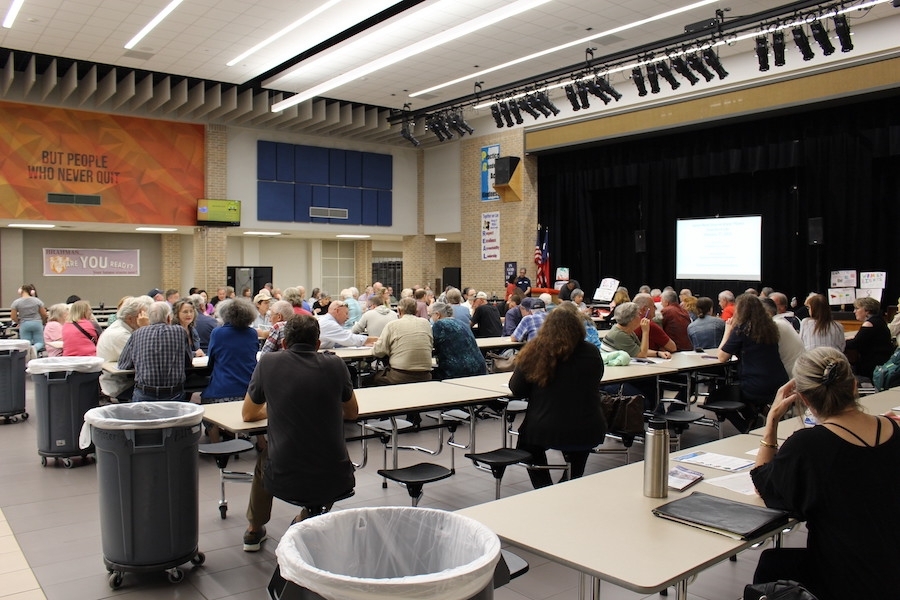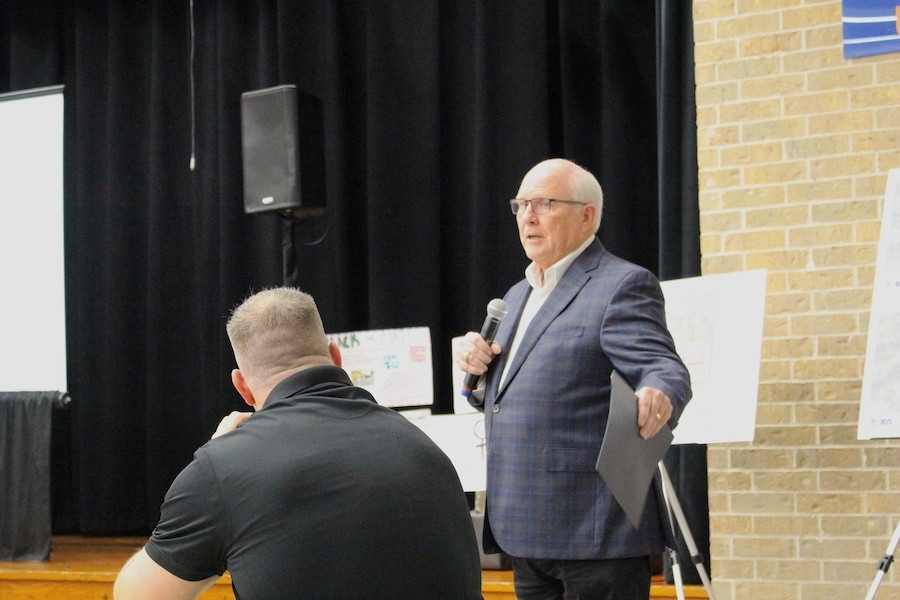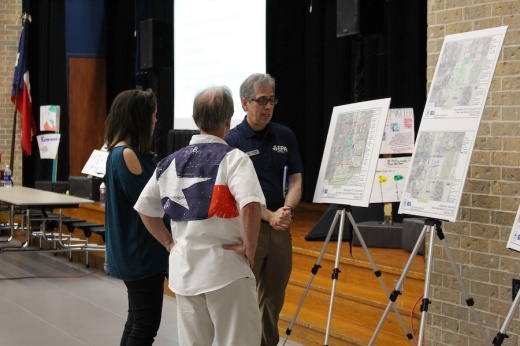The EPA hosted a public meeting Feb. 27 at Bleyl Middle School, providing updates on the Cy-Fair shopping center, which was placed on the Superfund National Priorities List in 2003. Hazardous waste sites are included on this list to give the federal government authority to clean them up.

About the superfund site
In 2002, Bell Dry Cleaners was found to be improperly dumping dry cleaning solvents behind the business. These chemicals contaminated soil, indoor air and groundwater in the area.
Several steps have been taken over the years to mitigate risks to public health. In 2008, the EPA implemented a time-critical removal action and connected 144 well users to the public water supply.
Additionally, bioremediation injections in 2016 and 2018 as well as the installation of a soil vapor extraction system in 2019 have substantially improved conditions in the affected area, Remedial Project Manager Raji Josiam said.
A five-year review released in September concluded the remedy implemented was “not protective.” Josiam said the only issue keeping the EPA from deeming the remedy “protective” is the groundwater still being used in the neighborhood.
Fifteen years after the public water line was first made available, Josiam said the EPA is in the same position urging residents to use public water. Officials have gone door to door in the affected area in their authority, she said, and many residents do not want to pay additional monthly fees for water. Upfront capital costs would be covered by the EPA, but homeowners would be responsible for monthly fees after connecting to public water.
Contaminants have not been identified in many private wells the EPA has tested, but Josiam said the EPA can only test wells in their jurisdiction when property owners grant access.
“Even if your well is clean, you are causing an effect to the aquifer, and you are pulling that water,” Josiam said.
Calls for further action
Representatives with the Texas Health and Environment Alliance attended the Feb. 27 meeting and said based on their own research, this area is a cancer cluster. Officials with the Texas Department of State Health Services said a 2016 assessment found childhood leukemia was not statistically higher in this region than in other parts of Texas, but other types of cancer have not been assessed.
Harris County Precinct 3 Commissioner Tom Ramsey partnered with the THEA earlier in February to call on the EPA to take further action.
“There's been numerous studies done, and I know a bit about studies. I think people are at the end of their patience. I think they've been very patient in the area on how long it's taken,” Ramsey said at the Feb. 27 meeting. “I think it's time that we move beyond studies and into the remedial action, and I know that that has been identified, but the one thing I think missing from the conversation that you're leading is dates.”

In addition to asking for a firm timeline regarding the next steps, Ramsey said he has been told the plume could have moved over time, and he believed a “big, bright sign” should be required at the site informing the public about the superfund.
Josiam said the EPA believes the plume is isolated, and she explained signs are not posted in front of the shopping center because there is no exposure risk there—the signage is behind the complex at the soil vapor extraction system.
Next steps
If enough residents commit to abandoning private wells and connecting to the public waterline by March 15, Josiam said that project could move forward this summer.
Bioremediation injections are slated to be implemented where needed in May with follow-up sampling this fall to gauge effectiveness. The soil vapor extraction system will also continue operating in the meantime to ensure minimal risk, she said.
From there, officials will investigate groundwater to determine any next steps that may be necessary.
“I know all these steps take time. It's taken us this long, but we are getting there. The one thing that's uncertain in all of this is the endpoint ... because we don't know how much is actually in the ground,” Josiam said.





